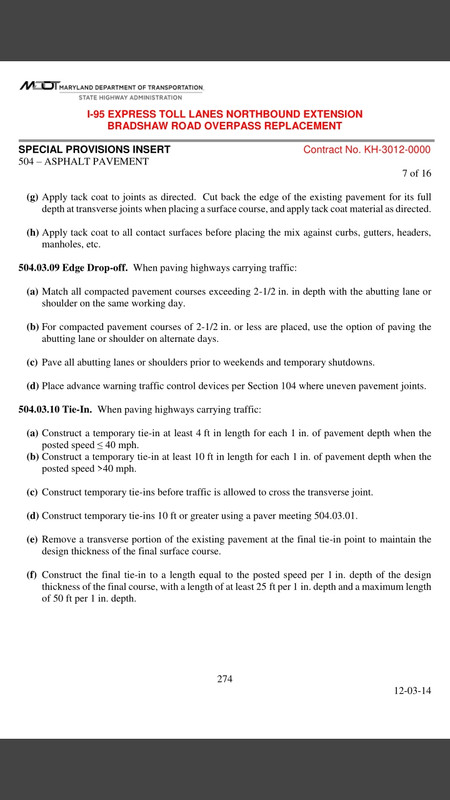- Nov 18, 2005
- 28,799
- 359
- 126
After having hit quite a few very hard and jolting transitions while construction companies finish resurfacing for the final phase of nearby highway widening and new construction, that got me thinking: are there any actual standards? Any required maximum grades?
I'm talking about situations where it's usually a concrete surface of some sort, typically a bridge, and they need to mill down the asphalt surface immediately before and after the concrete surface. Usually there's a mound of fresh asphalt they lay and shape to provide a softer transition instead of a straight 90 degree hard angle with like 3 inches in height difference.
The vast majority I've ever encountered in life have been perfectly acceptable though perhaps annoying. Annoying is OK in the end for temporary surfaces.
But there are a few around here, it's maybe like 10% of them, that are painful and incredibly jarring. Afterward I'm petting my dashboard apologizing to my car.
There are generally crucial standards in highway construction in regards to elevation changes over time. I'd be surprised if there weren't typically regulations of some sort that demanded a certain slope for these temporary transitions. Considering the worst ones I've experienced tend to appear to be like a 45 degree angle that starts maybe 6" or less from the edge to cover a few inch difference in surface height. It doesn't feel good on my car or on my bones, and I would definitely believe that there are serious safety risks here due to either driver behavior or shoddy vehicle maintenance.
I'm talking about situations where it's usually a concrete surface of some sort, typically a bridge, and they need to mill down the asphalt surface immediately before and after the concrete surface. Usually there's a mound of fresh asphalt they lay and shape to provide a softer transition instead of a straight 90 degree hard angle with like 3 inches in height difference.
The vast majority I've ever encountered in life have been perfectly acceptable though perhaps annoying. Annoying is OK in the end for temporary surfaces.
But there are a few around here, it's maybe like 10% of them, that are painful and incredibly jarring. Afterward I'm petting my dashboard apologizing to my car.
There are generally crucial standards in highway construction in regards to elevation changes over time. I'd be surprised if there weren't typically regulations of some sort that demanded a certain slope for these temporary transitions. Considering the worst ones I've experienced tend to appear to be like a 45 degree angle that starts maybe 6" or less from the edge to cover a few inch difference in surface height. It doesn't feel good on my car or on my bones, and I would definitely believe that there are serious safety risks here due to either driver behavior or shoddy vehicle maintenance.





